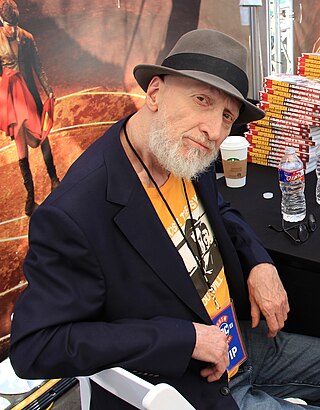
Frank Miller is an American comic book artist, comic book writer, and screenwriter known for his comic book stories and graphic novels such as his run on Daredevil, for which he created the character Elektra, and subsequent Daredevil: Born Again, The Dark Knight Returns, Batman: Year One, Sin City, and 300.

Judd Winick is an American cartoonist, comic book writer and screenwriter, as well as a former reality television personality. He first gained fame for his stint on MTV's The Real World: San Francisco in 1994, before finding success as a comic book creator with Pedro and Me, an autobiographical graphic novel about his friendship with The Real World castmate and AIDS educator Pedro Zamora. Winick wrote lengthy runs on DC Comics' Green Lantern and Green Arrow series and created The Life and Times of Juniper Lee animated TV series for Cartoon Network, which ran for three seasons.

Mark Millar is a Scottish comic book writer who first came to prominence with a run on the superhero series The Authority, published by DC Comics' Wildstorm imprint. Millar has written extensively for Marvel Comics, including runs on The Ultimates, which has been called "the comic book of the decade" by Time magazine and described as a major inspiration for the 2012 film The Avengers by its screenwriter Zak Penn, X-Men, Fantastic Four and Avengers for Marvel's Ultimate imprint, as well as Marvel Knights Spider-Man and Wolverine. In 2006, Millar wrote the Civil War mini-series that served as the centrepiece for the eponymous company-wide crossover storyline and later inspired the Marvel Studios film Captain America: Civil War. The "Old Man Logan" storyline, published as part of Millar's run on Wolverine, served as the inspiration for the 2017 film Logan.

Brian Azzarello is an American comic book writer and screenwriter who first came to prominence with the hardboiled crime series 100 Bullets, published by DC Comics' mature-audience imprint Vertigo. Azzarello is best known for his numerous collaborations with artists Eduardo Risso and Lee Bermejo, his contributions to the Watchmen prequel project Before Watchmen and The Dark Knight Returns sequel series DK III: The Master Race, as well as for his stints on the long-running Vertigo series Hellblazer and The New 52 relaunch of the Wonder Woman title.

Joseph "Jeph" Loeb III is an American film and television writer, producer and comic book writer. Loeb was a producer/writer on the TV series Smallville and Lost, writer for the films Commando and Teen Wolf, and a writer and co-executive producer on the NBC TV show Heroes from its premiere in 2006 to November 2008. From 2010 to 2019, Loeb was the Head of and Executive Vice President of Marvel Television.
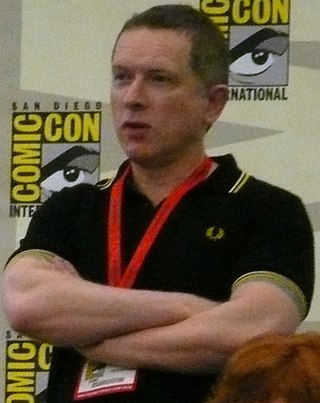
James Dale Robinson is a British writer of American comic books and screenplays best known for co-creating the character of Starman with Tony Harris and reviving the Justice Society of America in the late 1990s. His other notable works include the screenplay for the film adaptation of the Alan Moore and Kevin O'Neill's comic book series The League of Extraordinary Gentlemen and the multi-year crossover storyline "Superman: New Krypton".
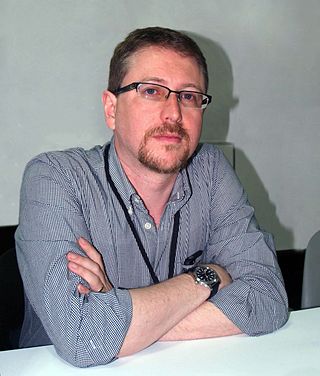
Andrew Diggle is a British comic book writer and former editor of the weekly anthology series 2000 AD. He is best known for his work on Adam Strange and Green Arrow for DC Comics as well as his creator-owned series The Losers and a run on Hellblazer for DC's Vertigo imprint, and for his stints on Thunderbolts and Daredevil at Marvel. Other credits include Gamekeeper for Virgin Comics, written by Diggle on the basis of a concept created by Guy Ritchie, a three-year run on Robert Kirkman's Thief of Thieves at Image, several short arcs written for IDW Publishing's Doctor Who series and two James Bond mini-series for Dynamite.

Joseph Kelly is an American comic book writer, penciler and editor who has written such titles as Deadpool, Uncanny X-Men, Action Comics, and JLA, as well as award-winning work on The Amazing Spider-Man and Superman. As part of the comics creator group Man of Action Studios, Kelly is one of the creators of the animated series Ben 10.
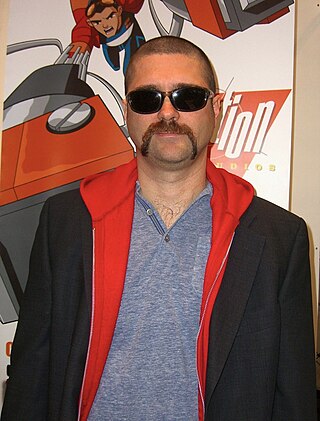
Joe Casey is an American comic book writer. He has worked on titles such as Wildcats 3.0, Uncanny X-Men, The Intimates, Adventures of Superman, and G.I. Joe: America's Elite among others. As part of the comics creator group Man of Action Studios, Casey is one of the creators of the animated series Ben 10.
Jeff Parker is an American comic book writer and artist. He is a member of Helioscope Studio.

John Higgins is an English comic book artist and writer. He did significant work for 2000 AD, and he has frequently worked with writer Alan Moore, most notably as colourist for Watchmen.

"For the Man Who Has Everything" is a comic book story by writer Alan Moore and artist Dave Gibbons, first published in Superman Annual #11 (1985). It contains the first appearance of the Black Mercy, a magical, extraterrestrial, plant-like organism which, upon symbiotically attaching itself to its victims, incapacitates them while causing them to hallucinate living out their greatest fantasy.
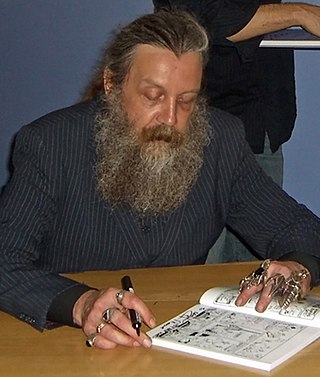
This is a bibliography of works by British author and comic book writer Alan Moore.
Mark Schultz is an American writer and illustrator of books and comics. His most widely recognized work is the creator-owned comic book series Xenozoic Tales, which describes a post-apocalyptic world where dinosaurs and other prehistoric creatures coexist with humans. In 1993, Xenozoic Tales was adapted into an animated series titled Cadillacs and Dinosaurs and a video game of the same name. Schultz's other notable works include various Aliens comic book mini-series published by Dark Horse and a four-year run on the DC Comics series Superman: The Man of Steel. In 2004, Schultz took over the scripting duties of the Prince Valiant comic strip.

Peter J. Tomasi is an American comic book editor and writer, best known for his work for DC Comics. As an editor, he oversaw numerous comic books featuring the Justice League, including series starring various members of that team such as Batman, Aquaman, Martian Manhunter, Green Lantern, and the Flash. As a writer, he has written titles featuring Batman-related characters, such as Batman and Robin and The Outsiders, and Green Lantern-related series such as Blackest Night, Brightest Day and Green Lantern: Emerald Warriors. He also wrote the screenplay for the animated movie The Death of Superman.
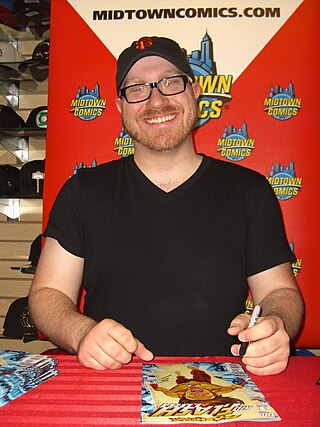
Sterling Gates is an American comic book and television writer.

This is a bibliography of the Scottish comic book writer Grant Morrison.

Tom King is an American author, comic book writer, and ex-CIA officer. He is best known for writing the novel A Once Crowded Sky and his comics The Vision for Marvel Comics, The Sheriff of Babylon for the DC Comics imprint Vertigo and Batman, Mister Miracle, and Supergirl: Woman of Tomorrow for DC Comics.
This is a bibliography of the comic book writer Geoff Johns, who has been writing superhero comics for over twenty years.

Greg Rucka is an American writer known for the series of novels starring his character Atticus Kodiak, the creator-owned comic book series Whiteout, Queen & Country, Stumptown and Lazarus, as well as lengthy runs on such titles as Detective Comics, Wonder Woman, Elektra and Wolverine. Rucka has written a substantial amount of supplemental material for a number of DC Comics' line-wide and inter-title crossovers, including "No Man's Land", "Infinite Crisis" and "New Krypton". Rucka has also co-created, along with writer Ed Brubaker and artist Michael Lark, the acclaimed comic book series Gotham Central, which takes the perspective of ordinary policemen working in Gotham City.



















